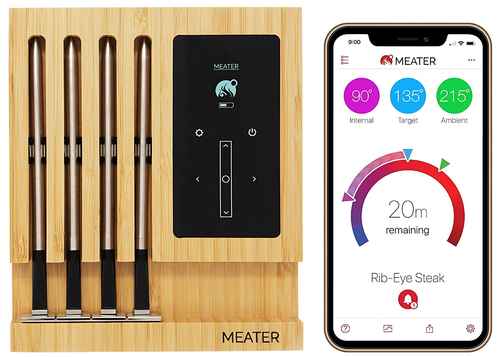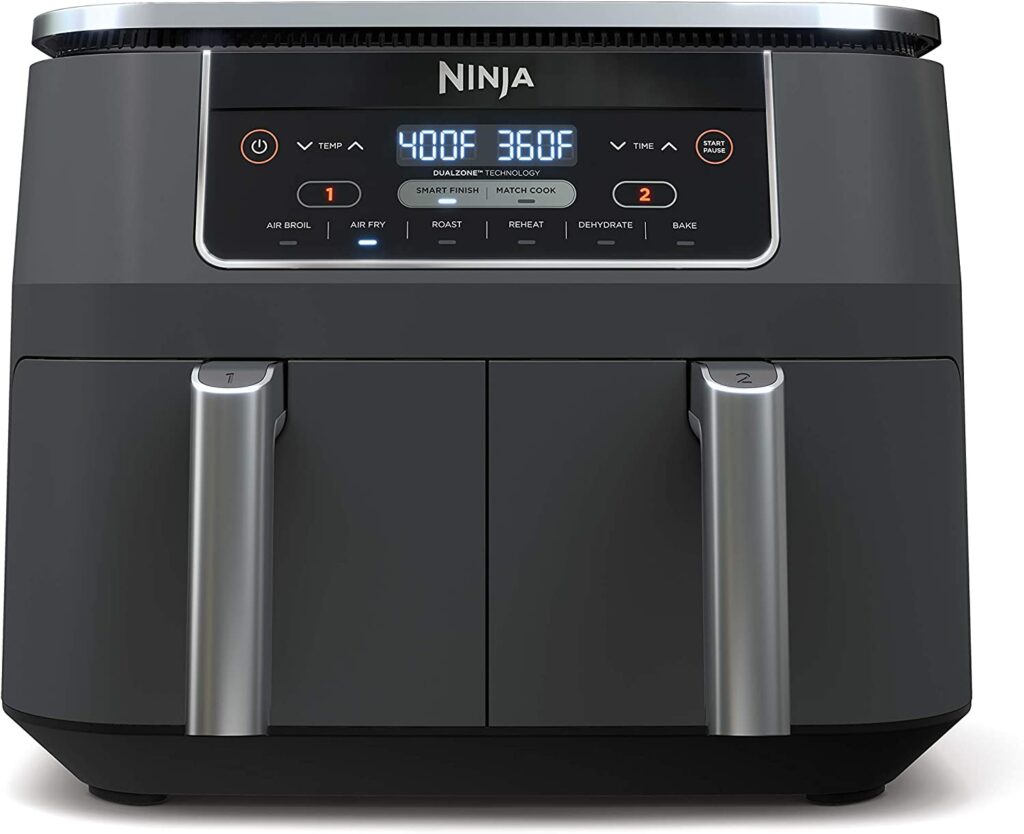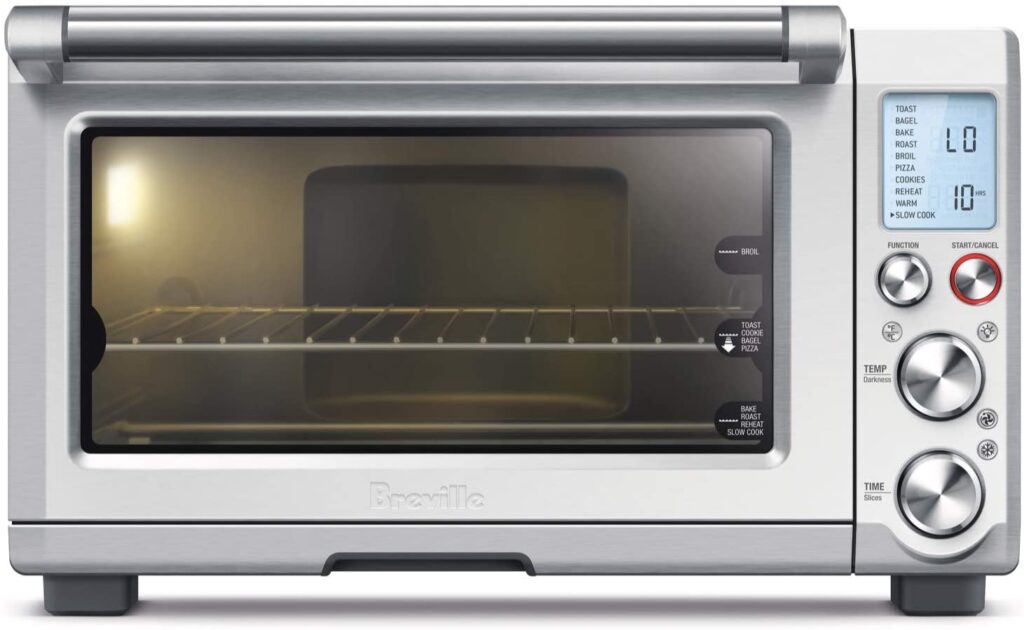[FULL GUIDE] How Long To Cook Beef Tenderloin In Oven
Cooking beef tenderloin in the oven is a luxurious and delectable way to enjoy this premium cut of meat. Whether you are hosting a special dinner or simply craving a gourmet meal at home, mastering the art of cooking beef tenderloin to perfection is essential. However, achieving the perfect doneness while preserving the tenderness and juiciness of the meat can be quite a challenge. In this comprehensive guide, we will delve into the intricacies of cooking beef tenderloin in the oven, exploring factors such as preparation, cooking times, oven temperatures, and much more.
Contents
- 1 Quick Answer: How Long To Cook Beef Tenderloin In The Oven
- 2 Choosing Beef Tenderloin
- 3 Preparing Beef Tenderloin
- 4 Oven Temperature For Cooking Beef Tenderloin
- 5 Oven Cooking Time For Cooking Beef Tenderloin
- 6 Resting The Beef Tenderloin
- 7 How To Cook Beef Tenderloin In The Oven
- 8 Cooking Techniques
- 9 Do I Need To Use Foil?
- 10 Cooking Times For Frozen Beef Tenderloin
- 11 Adjusting Oven Temperature For Cooking Beef Tenderloin
- 12 Adjusting Oven Cook Times For Cooking Beef Tenderloin
- 13 Undercooking
- 14 Overcooking
- 15 When Things Go Wrong
- 16 Tips For Cooking Beef Tenderloin In Oven
- 17 Conclusion
- 18 FAQS
- 18.1 How Long Should I Cook Beef Tenderloin In The Oven For Medium Rare?
- 18.2 What Is The Recommended Cooking Time For Well Done Beef Tenderloin In The Oven?
- 18.3 Can I Use A Meat Thermometer To Check The Doneness Of The Beef Tenderloin?
- 18.4 Should I Cover The Beef Tenderloin While Cooking In The Oven?
- 18.5 Do I Need To Rest The Beef Tenderloin Before Slicing And Serving?
Quick Answer: How Long To Cook Beef Tenderloin In The Oven
Beef tenderloin is typically cooked in the oven at a high temperature to achieve a tender and juicy result. The cooking time varies based on the desired level of doneness, with an approximate range of 15-20 minutes per pound at 425°F (220°C) for medium-rare. It’s essential to use a meat thermometer to monitor the internal temperature and ensure it reaches the desired level of doneness.
Choosing Beef Tenderloin
Selecting a high-quality beef tenderloin is crucial for a successful cooking outcome. When choosing beef tenderloin, look for a cut that has fine marbling and a bright red color. The marbling, or intramuscular fat, contributes to the tenderness, juiciness, and flavor of the meat. Opt for a tenderloin that is well-trimmed and free of excessive connective tissue, as this will ensure a more effortless cooking process and a superior eating experience.
Preparing Beef Tenderloin
Before cooking, it’s important to properly prepare the beef tenderloin to enhance its flavor and texture. Here’s a step-by-step guide to preparing beef tenderloin:
1. Trimming
Start by inspecting the beef tenderloin and trim off any excess fat or silver skin using a sharp knife. Removing the silver skin ensures that the meat cooks evenly and prevents any chewy or tough portions.
2. Tying
If the tenderloin tapers at one end, consider tying it with kitchen twine to ensure even cooking. This simple step helps the tenderloin maintain a consistent shape, allowing for uniform doneness throughout the entire cut.
3. Seasoning
Season the beef tenderloin generously with salt and pepper. For added flavor, consider incorporating herbs and spices such as rosemary, thyme, or garlic. The seasoning can be tailored to suit your personal taste preferences and culinary creativity.
4. Resting
Allow the seasoned tenderloin to rest at room temperature for about 30 minutes before cooking. This resting period allows the meat to come to an even temperature, promoting more uniform cooking and enhancing the overall tenderness.
Oven Temperature For Cooking Beef Tenderloin
The oven temperature plays a significant role in achieving the desired doneness and texture of beef tenderloin. A high temperature is favored to create a flavorful crust on the outside while maintaining a tender, juicy interior. The recommended oven temperature for cooking beef tenderloin is 425°F (220°C). This high heat allows for efficient cooking and caramelization of the exterior, resulting in a delectable crust while preserving the succulence of the meat.
Oven Cooking Time For Cooking Beef Tenderloin
Beef tenderloin is a popular cut of meat known for its tender and juicy texture. It is often reserved for special occasions or celebratory meals due to its exceptional flavor and tenderness. Cooking beef tenderloin in the oven is a great way to achieve a perfectly cooked piece of meat that is sure to impress your guests. However, knowing the correct cooking time is essential to avoid overcooking or undercooking this delicate cut.
The cooking time for beef tenderloin in the oven can vary depending on several factors, such as the desired level of doneness, the thickness of the meat, and the specific oven temperature. To ensure ideal cooking results, it is crucial to have a reliable meat thermometer on hand. This will allow you to check the internal temperature of the meat accurately and avoid overcooking.
Here is a general guideline for cooking beef tenderloin in the oven based on the desired level of doneness:
- Rare: For a juicy and tender center with a pink hue throughout, cook the beef tenderloin to an internal temperature of 125°F (52°C). This will result in a cooking time of approximately 15 to 20 minutes per pound.
- Medium-rare: If you prefer a slightly more cooked center with a hint of pink, aim for an internal temperature of 135°F (57°C). The beef tenderloin should be cooked for around 22 to 25 minutes per pound.
- Medium: For a medium doneness with a warm pink center, cook the meat to an internal temperature of 145°F (63°C). The cooking time will be roughly 28 to 30 minutes per pound.
- Medium-well to well-done: If you prefer your beef tenderloin fully cooked with little to no pinkness, aim for an internal temperature of 160°F (71°C) or higher. The cooking time can range from 35 to 40 minutes per pound.
Resting The Beef Tenderloin
Once the beef tenderloin reaches the desired level of doneness, it’s crucial to allow it to rest before slicing. Transfer the cooked tenderloin to a cutting board and loosely tent it with aluminum foil. Let it rest for at least 10-15 minutes to allow the juices to redistribute throughout the meat, ensuring a moist and succulent outcome. Resting also allows the internal temperature to rise slightly and contributes to a more tender eating experience.
Cooking beef tenderloin in the oven is a culinary endeavor that rewards patience and precision. By carefully selecting a high-quality cut, properly preparing and seasoning the tenderloin, and mastering the oven temperatures and cooking times, you can achieve a flawlessly cooked beef tenderloin that captivates the palate with its tenderness and rich flavor. Whether you aim for a rare, medium-rare, or well-done result, understanding the nuances of cooking beef tenderloin in the oven empowers you to create a memorable dining experience that celebrates the elegance of this exceptional cut of meat.
How To Cook Beef Tenderloin In The Oven
Now that we have an understanding of the general cooking time, let’s delve into the step-by-step process of cooking beef tenderloin in the oven:
Step 1: Preparing the Beef Tenderloin
- Start by selecting a high-quality beef tenderloin that is well-marbled and has visible fat. This will ensure optimum tenderness and flavor.
- Before cooking, remove the beef tenderloin from the refrigerator and let it come to room temperature. This allows for more even cooking throughout the meat.
- Trim any excess fat or silverskin from the beef tenderloin but leave a thin layer of fat on top to enhance flavor and moisture.
Step 2: Seasoning the Beef Tenderloin
- Prior to cooking, season the beef tenderloin generously with kosher salt and freshly ground black pepper. This simple seasoning allows the natural flavors of the meat to shine through.
- For an extra depth of flavor, you can also add herbs and spices of your choice, such as rosemary, thyme, garlic powder, or paprika. Rub the seasoning evenly onto all sides of the meat.
Step 3: Preheating the Oven
- Preheat the oven to 425°F (220°C) to create a hot cooking environment that will seal in the juices and result in a flavorful crust.
Step 4: Searing the Beef Tenderloin
- Heat a cast-iron skillet or a heavy-bottomed oven-safe pan over high heat. Add a small amount of oil with a high smoke point, such as canola or vegetable oil.
- Once the pan is hot, carefully place the seasoned beef tenderloin into the pan. Sear each side for about 2 to 3 minutes or until a golden-brown crust forms.
- If desired, you can also sear the beef tenderloin on the grill or under the broiler for a charred and smoky flavor.
Step 5: Roasting the Beef Tenderloin
- Transfer the seared beef tenderloin onto a baking tray or a roasting pan, preferably fitted with a wire rack. This elevates the meat, allowing heat to circulate evenly.
- Place the beef tenderloin in the preheated oven and cook according to the desired level of doneness and the general cooking time guidelines provided earlier. Remember to use a meat thermometer to check the internal temperature regularly.
- To ensure even cooking, rotate the pan halfway through the cooking process. This will prevent one side from becoming more cooked than the other.
Step 6: Resting the Beef Tenderloin
- Once the beef tenderloin reaches the desired internal temperature, remove it from the oven. Tent the meat loosely with aluminum foil to retain the heat and let it rest for about 10 to 15 minutes.
- Resting allows the juices to redistribute throughout the meat, resulting in a juicier and more flavorful final product.
Step 7: Slicing and Serving the Beef Tenderloin
- After the resting period, uncover the beef tenderloin and transfer it onto a cutting board. Make sure to reserve any accumulated juices for serving.
- Slice the beef tenderloin into individual servings, usually about 1/2 to 1-inch thick, against the grain. This ensures tenderness and easy chewing.
- Serve the beef tenderloin immediately, drizzling the reserved juices over the slices for added flavor. Enhance the presentation with garnishes such as fresh herbs or a side of your choice.
Cooking Techniques
While the above method provides a traditional way to cook beef tenderloin in the oven, there are a few variations and techniques you can consider to elevate your cooking experience:
- Reverse sear: This method involves cooking the beef tenderloin at a low temperature first, followed by a quick sear to achieve a perfectly cooked interior and a flavorful crust. To do this, preheat the oven to 275°F (135°C), roast the beef tenderloin until it reaches an internal temperature of about 10°F (6°C) below your desired doneness, then sear it in a hot pan or under the broiler for a few minutes. This technique allows for more control over the cooking process.
- Herb crust: Create a flavorful crust by coating the seasoned beef tenderloin with a mixture of finely chopped herbs, such as parsley, thyme, and rosemary, before searing or roasting. The herbs will infuse the meat with exquisite fragrance and add an extra layer of taste.
- Bacon wrapping: A popular technique to keep the beef tenderloin moist and flavorful is to wrap it with bacon before cooking. The bacon fat bastes the meat as it cooks, adding richness and moisture. Simply wrap the seasoned beef tenderloin tightly with slices of bacon and secure them with toothpicks before searing or roasting.
Do I Need To Use Foil?
The use of foil when cooking beef tenderloin in the oven is a matter of personal preference. While wrapping the beef tenderloin in foil can help it retain moisture, it can also result in a less crispy exterior. Utilizing foil can be particularly useful if you are following a low and slow cooking method, such as the reverse sear technique mentioned earlier.
To use foil, simply wrap the beef tenderloin tightly with aluminum foil before roasting. This creates a steamy environment that helps the meat retain its moisture. However, it is crucial to remove the foil during the last few minutes of cooking to allow the exterior to brown and develop a crispy crust.
If you prefer a well-browned and crisp exterior from the start, it is recommended to cook the beef tenderloin without foil. This allows the heat to circulate more freely, resulting in a beautiful caramelized crust. The internal temperature still needs to be carefully monitored to prevent overcooking.
Cooking beef tenderloin in the oven can be a rewarding experience that yields mouthwatering results. By following the recommended oven cooking time guidelines and using a meat thermometer, you can achieve the perfect level of doneness and preserve the tenderness of this prized cut of meat. Experimenting with different cooking techniques, seasonings, and optional bacon wrapping can further enhance the flavor profile and impress your guests. Remember to slice the beef tenderloin against the grain and to let it rest before serving to ensure maximum juiciness. So, go ahead and try your hand at cooking beef tenderloin in the oven, and savor every bite of this delectable cut of meat.
Cooking Times For Frozen Beef Tenderloin
Beef tenderloin is a prized cut of meat known for its tenderness and exceptional flavor. It is often considered one of the most luxurious cuts of beef and is frequently served on special occasions. Cooking beef tenderloin to perfection requires careful attention to time and temperature to ensure that it is cooked to the desired level of doneness.
If you are starting with a frozen beef tenderloin, it is important to thaw it properly before cooking. Thawing the meat in the refrigerator is the best method, as it allows for even and safe thawing. The general rule of thumb is to allow 24 hours of thawing time in the refrigerator for every 5 pounds of beef tenderloin.
Once the beef tenderloin is fully thawed, you can proceed with the cooking process. The cooking times provided below are approximate and should be used as a starting point. It is essential to test the internal temperature of the meat using a meat thermometer to ensure that it reaches the desired level of doneness.
For a 2-pound beef tenderloin cooked at 350°F (175°C), the approximate cooking times are as follows:
- Rare: 30-35 minutes
- Medium Rare: 35-40 minutes
- Medium: 40-45 minutes
- Medium Well: 45-50 minutes
- Well Done: 50-55 minutes
Keep in mind that these cooking times may vary depending on the thickness of your beef tenderloin and the accuracy of your oven’s temperature. Always use a meat thermometer to determine when your beef tenderloin has reached the desired internal temperature.
Adjusting Oven Temperature For Cooking Beef Tenderloin
The oven temperature plays a crucial role in achieving the desired level of doneness when cooking beef tenderloin. Generally, a temperature of 350°F (175°C) is recommended for cooking beef tenderloin. However, you may need to adjust the oven temperature based on your preferences and the timing requirements.
If you prefer a quicker cooking time, you can increase the oven temperature. Increasing the temperature to 400°F (200°C) will result in a slightly shorter cooking time, but you must monitor the beef tenderloin closely to prevent overcooking. The higher temperature will sear the outside of the meat more quickly, potentially sacrificing some tenderness.
On the other hand, if you prefer a more slow and gentle cooking process, you can decrease the oven temperature. Lowering the temperature to 325°F (160°C) will result in a longer cooking time, allowing the beef tenderloin to cook more evenly and potentially retain more juices.
It’s essential to note that adjusting the oven temperature will not affect the cooking times significantly. Temperature adjustments mainly influence the texture and moisture retention of the meat. Regardless of the oven temperature you choose, always use a meat thermometer to ensure the beef tenderloin reaches the desired internal temperature.
Adjusting Oven Cook Times For Cooking Beef Tenderloin
The cooking times provided earlier are approximate and may not be suitable for all ovens or beef tenderloins. Factors such as the thickness of the meat and the accuracy of your oven can affect the cooking time. To account for these variables, it is crucial to rely on a meat thermometer to determine the doneness of your beef tenderloin accurately.
To use a meat thermometer, insert it horizontally into the thickest part of the beef tenderloin, ensuring that the tip is not touching any bone or fat. The following internal temperatures correspond to different levels of doneness:
- Rare: 120°F to 125°F (49°C to 52°C)
- Medium Rare: 130°F to 135°F (54°C to 57°C)
- Medium: 140°F to 145°F (60°C to 63°C)
- Medium Well: 150°F to 155°F (66°C to 68°C)
- Well Done: 160°F and above (71°C and above)
It’s crucial to remove the beef tenderloin from the oven when it is a few degrees below the desired internal temperature, as the residual heat will continue to cook the meat while it rests. Allow the beef tenderloin to rest for at least 10 minutes before slicing to ensure optimal juiciness and tenderness.
Undercooking
While some individuals prefer their beef tenderloin rare or medium rare, it is essential to adequately cook the meat to ensure food safety. Undercooked beef can contain harmful bacteria like E.coli, which can cause foodborne illnesses. To eliminate the risk, it is recommended to cook beef tenderloin to at least medium doneness.
If you prefer a rare or medium-rare beef tenderloin, ensure that you are using high-quality, properly handled, and stored beef. It is also crucial to sear the outside of the beef tenderloin properly before roasting to kill any surface bacteria. Additionally, always use a meat thermometer to check the internal temperature and ensure it reaches the recommended threshold for safety.
Cooking beef tenderloin to perfection requires careful attention to time, temperature, and proper food safety practices. Whether you are starting with a frozen or freshly thawed beef tenderloin, following the recommended cooking times and using a meat thermometer will help you achieve the desired level of doneness. Adjusting the oven temperature can influence the texture and moisture retention of the beef tenderloin, but the cooking times will not be significantly affected. Always use a meat thermometer to test the internal temperature and remove the beef tenderloin from the oven a few degrees below the desired level of doneness to ensure optimal juiciness. Lastly, remember to cook beef tenderloin to at least medium doneness to ensure food safety. Undercooked beef can harbor harmful bacteria. By following these guidelines, you can enjoy a perfectly cooked and safe-to-eat beef tenderloin that will impress your family and guests alike.
Overcooking
Beef tenderloin is a succulent and flavorful cut of meat, perfect for a special occasion or a fancy dinner. Cooking it to perfection is essential to bringing out its delicate flavors and juicy texture. However, many people find it intimidating to cook because of its high price tag and the fear of overcooking it.
Overcooking beef tenderloin can ruin the texture and taste of the meat and leave it dry and tough. The best way to ensure that your beef tenderloin isn’t overcooked is to use a meat thermometer to measure the internal temperature of the meat. The ideal temperature for cooking beef tenderloin is 135°F (57°C) for medium-rare, 145°F (63°C) for medium, and 160°F (71°C) for well-done. Make sure to measure the temperature at the thickest part of the meat, without touching the bone.
When Things Go Wrong
If you accidentally overcook your beef tenderloin and it turns out dry and tough, you can still salvage it by slicing it thin and serving it with a flavorful sauce. You can also use leftover beef tenderloin for sandwiches, salads, or stir-fry dishes.
Tips For Cooking Beef Tenderloin In Oven
1. Choose The Right Cut
The quality of the beef tenderloin determines the taste and texture of the final product. Look for a beef tenderloin that is bright red in color, with a minimal amount of visible fat. The most tender part of the tenderloin is the thickest, center-cut portion. It is also the most expensive, but investing in a high-quality cut of beef tenderloin is worth it.
2. Preheat The Oven
Preheating your oven to the correct temperature is essential for cooking the beef tenderloin evenly. The ideal temperature for cooking beef tenderloin is 425°F (218°C).
3. Season The Meat
Beef tenderloin has a delicate flavor, so it is best to keep the seasoning simple. Sprinkle the beef tenderloin with salt and pepper, or use your favorite dry rub. You can also brush it with garlic and herb butter for added flavor.
4. Sear The Meat
While not necessary, searing the beef tenderloin before roasting can give it a nice crust and seal in the juices. Heat a tablespoon of oil in a skillet over high heat and sear the beef tenderloin on all sides for about 2-3 minutes.
5. Roast The Meat
Place the beef tenderloin on a roasting pan, and place it in the preheated oven. Cook the beef tenderloin until it reaches your desired internal temperature, using a meat thermometer to check. The amount of time it takes to cook the beef tenderloin will depend on its size. As a general rule of thumb, it takes about 15-20 minutes per pound to cook.
6. Rest The Meat
Once the beef tenderloin is cooked, let it rest for 10-15 minutes before slicing. This allows the juices to redistribute throughout the meat, resulting in a juicy and tender final product. Cover the beef tenderloin with foil to keep it warm while it rests.
Conclusion
Cooking beef tenderloin in the oven is a simple and elegant way to prepare this delicious cut of meat. By following these tips, you can ensure that your beef tenderloin is cooked to perfection every time. Remember to use a meat thermometer to check the internal temperature and to let the meat rest before slicing. With a little practice, you can master the art of cooking beef tenderloin in the oven and impress your guests with a delicious and juicy meal.
FAQS
How Long Should I Cook Beef Tenderloin In The Oven For Medium Rare?
For medium rare beef tenderloin, cook at 425 degrees Fahrenheit for 10-15 minutes per pound, or until the internal temperature reaches 135-140 degrees Fahrenheit.
What Is The Recommended Cooking Time For Well Done Beef Tenderloin In The Oven?
To achieve a well done beef tenderloin, cook at 425 degrees Fahrenheit for 20-25 minutes per pound, or until the internal temperature reaches 160 degrees Fahrenheit.
Can I Use A Meat Thermometer To Check The Doneness Of The Beef Tenderloin?
Yes, it is recommended to use a meat thermometer to ensure the beef tenderloin is properly cooked. Insert the thermometer into the thickest part of the tenderloin, making sure it does not touch any bones, to check the internal temperature.
Should I Cover The Beef Tenderloin While Cooking In The Oven?
It is not necessary to cover the beef tenderloin while cooking in the oven. However, covering it with foil after removing it from the oven will help to keep it warm and allow the juices to redistribute.
Do I Need To Rest The Beef Tenderloin Before Slicing And Serving?
Yes, it is recommended to let the beef tenderloin rest for 10-15 minutes after removing it from the oven. This allows the juices to redistribute and ensures a more tender and flavorful meat.



